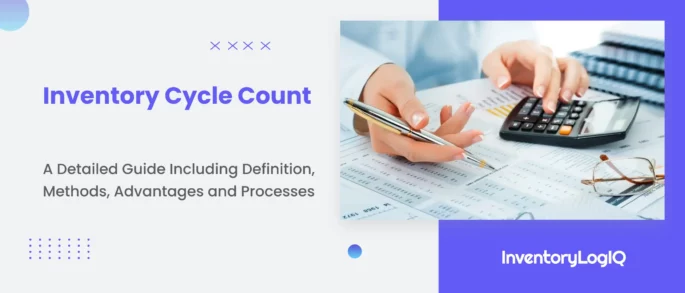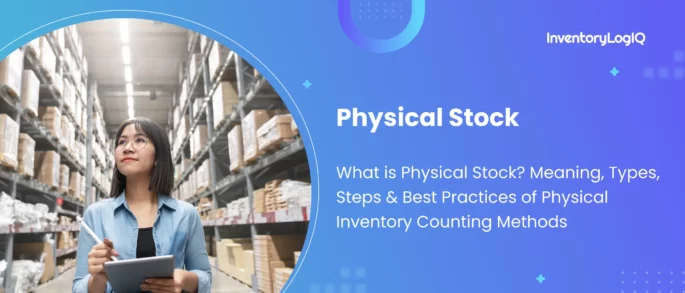The Definitive Guide to Consignment Inventory Including How it Operates, Pros and Cons, Best Practices and More in 2023
According to Statista, in 2023, the eCommerce market is expected to generate US$113.50 billion in revenue. By 2027, the market volume is predicted to reach US$191.40 billion, with revenue forecast to expand at a 13.96% annual rate (CAGR 2023-2027). As any store will tell you, buying merchandise entails a certain level of risk. It usually happens after the retailer gets things from the supplier and resells them for a profit before stocking retail products.
The retailer has left with unsold goods that they must either markdown or unload if buyers need to buy more things. Hence, selling a brand-new product can be a costly undertaking. Also, predicting whether a product will be profitable and popular is almost impossible. Of course, you may have conducted the required research and kept up with all current market trends. But for whatever reason, the product could be better liked.
Isn’t it simpler to test new products without purchasing them in-store? Consignment inventory, a type of business concept, fortunately, provides for this. Consignment inventory is defined, but how does it operate? We’ll examine this business model’s concept in more detail and explain how it operates so that you can use it to your advantage.
- What is Consignment Inventory?
- How Does Consignment Stock Operate?
- The Benefits of Consignment Inventory For Consignors in 2023
- Consignment Inventory Benefits For Consignees in 2023
- Main Disadvantages of Consignment Inventory
- 4 Recommended Best Practices for Consignment Inventory in 2023
- Conclusion: How Inventory LogIQ Can Help In Managing Your Inventory
- Consignment Inventory: FAQs
What is Consignment Inventory?
Consignment inventory is a type of business arrangement or supply chain strategy in which the consignor—a manufacturer, supplier, or wholesaler—gives inventory to the consignee—a retailer or retail store—so that they can resell it through various channels of distribution. The consignee pays the consignor only after a client purchases the items and retains the profits.
When things are consigned, the consignor owns them until the retailer or consignee sells them to a customer and pays the consignor the appropriate amount. For instance, a consignment agreement between a retailer and a manufacturer of women’s clothing might be reached peacefully, with the shop agreeing to pay the retailer up front for an inventory of the manufacturer’s products.
The inventories will be transferred from the manufacturer to the retailer, and the manufacturer will only be paid for the sales of the devices. Unsold merchandise inventory that a shop cannot sell will continue to be the manufacturer’s property. In the best-case scenario, well-handled consigned inventory can benefit both the consignor and the consignee while still retaining ownership of the manufacturer or supplier.
How Does Consignment Stock Operate?
How can you implement consignment inventory in your store? Although every arrangement may differ, strong consignment agreements usually result when you use these basic practices. They are listed below:
Develop a Solid Vendor Relationship
The successful consignment will be based on having a strong relationship with your merchants. Make sure you sign a consignment agreement with merchants you trust whose principles coincide with your own if you’re thinking about doing so. There are numerous techniques to locate vendors. These may be vendors you’ve dealt with in the past. However, you might also run upon them at trade events or when actively looking for goods. Whatever the situation, make sure you thoroughly check them out before creating the papers.
Create an Agreement That Benefits Both Parties
Making and finalising a formal consignment agreement is the following stage. Both sides should work to create a situation where they may benefit. Although your situation will determine the contents of your agreement, you should generally include the following provisions:
Include an Ability To Sell Clause
The agreement is merely formalised under the “right to sell” clause. It should state that the consignor has given the consignee permission to sell and exhibit the items in their retail location.
Use a Pricing Clause
The pricing clause in your contract must specify the price at which the retailer will sell the goods. This section may occasionally determine the “minimum price” at which the consignee is permitted to sell the goods.
Specify a Fee For Consignment
The percentage of sales that would go to the consignee and consignor is described in this section. In addition, this contract section frequently specifies when the consigner will receive the money. For instance, it should be specified in writing if the consignor wants the sale funds provided within ten days following the sale.
Mention the Products’ Location
The precise location (address) where the committed things will be kept and stored should be included in this section.
Specify the Time Frame
A deadline for when objects must be sold should be specified. The goods must be returned to the consignor if they sell after the deadline.
The Benefits of Consignment Inventory For Consignors in 2023
Consignors are makers, wholesalers, or suppliers of goods, as was previously indicated. The benefits of a consignment model are available to the consignor because consignment inventory is comparable to a leasing agreement. These consist of the following:
Avoids Inventory Carrying Costs
Inventory carrying costs are the financial and inventory costs incurred by a company while holding a specific volume of inventory. In a nutshell, it refers to the expense of keeping the products in stock, owning them, or storing them. Consignors and suppliers can pay little or no holding expenses because they transfer ownership and are not required to hold onto the consignment items. As a result, they will have more cash available to use for other business-related costs.
Tests the Market
Before investing in producing and storing a sizable number of their goods, consignors can use consignment inventory to determine the demand for their wares. This is because a merchant typically owns a sizeable portion of the consignment merchandise they acquire. This is something that the consignor may take advantage of and showcase things to the market in a more limited way. They can assess the level of demand for their goods in this way.
Streamlines the Supply Chain
The main advantage of a consignment inventory strategy is that it reduces expenses and eliminates inventory. But it also involves simplifying the supply chain. Suppliers, producers, and distributors can save money using consignment inventory instead of buying stock and renting storage space separately. It is more effective for the complete consignment process to design a supply chain that doesn’t have additional expenses and space.
Establishes Relations With Retailers
The consignee assumes many risks because a retailer is ready to take on most of a product’s stock. They are, therefore, more likely to remain devoted to their consignor. When you consider the possibility that a retailer’s success depends on their supplier, a consignor wants to keep their retailer satisfied to ensure that they don’t have any plans to transfer consignors.
Amplifies Cash Flow
Consignors who use a consignment inventory model can improve their company’s cash flow. This is because, depending on the ownership models, selling some of the stock to customers may free up room for another vendor-managed inventory, enabling them to generate more profit.
Consignment Inventory Benefits For Consignees in 2023
Retailers or businesses that accept the obligation to sell consigned inventory on behalf of a manufacturer or supplier are called consignees. It implies that consignees can be either person, corporations, or businesses. These people and companies can profit from consignment inventory in the following ways:
Provides a Variety Of Products To Choose From
Most of the time, when a retailer buys consignment inventory, they order the item in quantity and stock it at their establishment. Depending on the product, they will have a large selection of consigned products to choose from and can base their decision on their target market, location, and customer.
Cuts Costs
It is crucial to remember that a merchant must pay for the number of committed products they sell from their store. In exchange, businesses can avoid any potential markdowns or inventory losses and not have to bear the expense of consignment goods that do not sell.
Enhances Cash Flow
This strategy enables consignees to boost sales and cash flow. This is so they may make room in their store for additional vendor-managed inventory, which will help them make more money by selling part of the stock.
Strengthens Relationships With Manufacturers
A retailer takes on a significant financial risk when they agree to purchase most of a product’s stock. Since they have a common goal, they build relationships with their suppliers the more they market and advertise the consignment products. Significantly, they are more inclined to stick with their supplier.
Main Disadvantages of Consignment Inventory
Consignment inventory has drawbacks, just like anything else. The following are some of the more typical ones:
Low Visibility of Products
Low visibility can be detrimental to retail establishments, particularly regarding newly consigned goods. As a result, they are typically challenging to sell. The most popular solution to this issue is marketing the product to attract new clients. Although it could be a reasonably straightforward process for consignees, selling takes a lot of work.
High Carrying Prices for Retailers
The inventory must be retrieved from the warehouse by the retailers. Therefore, the more it costs them to keep it on the shelves of the shops, the greater their carrying costs will be. Additionally, they will have to pay for extra expenses like warehouse maintenance and storage of their inventory. In other words, it will cost them more and impact their profit margins after selling.
Issues Regarding Cash Flow
Retailers using the inventory will be able to get paid once the item is sold. It implies that even when they anticipate more significant sales, they can only sometimes spend their money immediately.
Involves a Lot of Risks
The consignor is taking on quite a bit of risk by being able to take on the majority of the product’s stock from the warehouse. This is due to the possibility that shops will only effectively sell the goods. When this occurs, the consignor/supplier could lose much more money than usual and might even need to increase their inventory. It may also be challenging for the retailer to sell some consignment products because they lose their effectiveness after a set time. Additionally, this will increase inventory costs and prevent the provider from losing money.
Challenges Relating to Inventory Management
This supply chain strategy may make stock management more difficult. This is necessary for merchants to track consigned items independently from non-consigned items. They can track sales more quickly and replenish consignments from the supplier’s warehouse as needed. It would be challenging for retailers to track their margins, making it tough to profit because these consigned items do not include any upfront supply costs.
4 Recommended Best Practices for Consignment Inventory in 2023
Recommended practices can help you avoid the drawbacks of consignment inventory in the simplest way possible. The most important ones are listed below:
Make a Reliable Contract
It is imperative to emphasise this idea. Before sending or receiving goods for your consignment inventory, you must create a firm contract. Both parties should accept the Terms. Include due payment dates, supply replenishment terms, inventory damage terms, inventory reporting, and all other essential details. Clarity is essential because you’re beginning a collaborative partnership. Before you start, go over all the specifics in the contract. You’ll spare yourself future hassles.
Employ the Appropriate Technology
We said in the last section that managing consignment inventory differs from your regular stock. However, many businesses need to pay attention to this and end themselves in trouble. Select inventory management software that can assist you in managing your consignment inventory, and you may avoid this problem. We promise that using this software will significantly simplify the management of your consignment inventory project.
Collaborate With Your Team
Keep in mind that consignment inventory is a team effort. Because selling the consignment items is in everyone’s best interest, the two businesses should cooperate. Consignors, this involves assisting merchants in better comprehending your goods so that they may market them more successfully. Additionally, consignors must make sure that they communicate with suppliers whenever inquiries or problems emerge. The benefit of using consignment inventory is that you don’t have to carry the weight by yourself. With your partner, discuss information and a plan of action.
Use Marketing Strategies
Whatever side of the consignment inventory debate you’re on, you should always have a few different options for sales channels. Multiple sales channels reduce risk if one consignment agreement fails. You can read here in detail about multiple-channel inventory management.
Conclusion: How Inventory LogIQ Can Help In Managing Your Inventory
Consignment inventory can be quite advantageous for both suppliers and retailers. Your chances of success with consignment are higher when you have a mutually beneficial agreement and employ the appropriate inventory management solutions. This arrangement can be beneficial for both parties, as it allows the supplier or manufacturer to reach a wider market without having to invest in retail space or staff, and it allows the retailer to offer a wider range of products to its customers without having to carry the inventory itself.

Why is Inventory LogIQ the finest solution for managing inventory? Because we are a dedicated inventory management company that offers a variety of solutions. As you grow your eCommerce business, you’ll learn that in-house inventory management can quickly become a headache. You can completely expand your inventory procurement and management strategy while lowering inventory storage and running costs. All of your needs for inventory management and fulfillment are met by Inventory LogIQ. Here are some reasons why adopting a 3PL is superior to all other options for inventory tracking:
Inventory Segmenting
By providing your company with inventory that is segmented according to various factors and stored on pallets, shelves, and bins, Inventory LogIQ is intended to help you quickly turn over your inventory. In addition, using our services may avoid unnecessary storage costs and save time and money.
Inventory Tracking
Making wise business judgements is more straightforward with accurate data. To make your business function more smoothly, we assist you with demand predictions, reorder points and more. For example, you can view SKU performance over time and determine the days’ worth of inventory you have on hand in real-time from the Inventory LogIQ dashboard.
Efficient Data Management
The ideal inventory management solution will vary from company to company, but we can be an all-in-one tool that is more economical than using many devices at once and more effective than attempting to synchronise dissimilar systems and handle every step of the inventory management process on your own. Your inventory management system will function flawlessly as a result.
Suggested Read: What is Distributed Inventory? How It Works & When To Consider Adopting Distributed Inventory Systems Using Multiple Fulfillment Centers?









